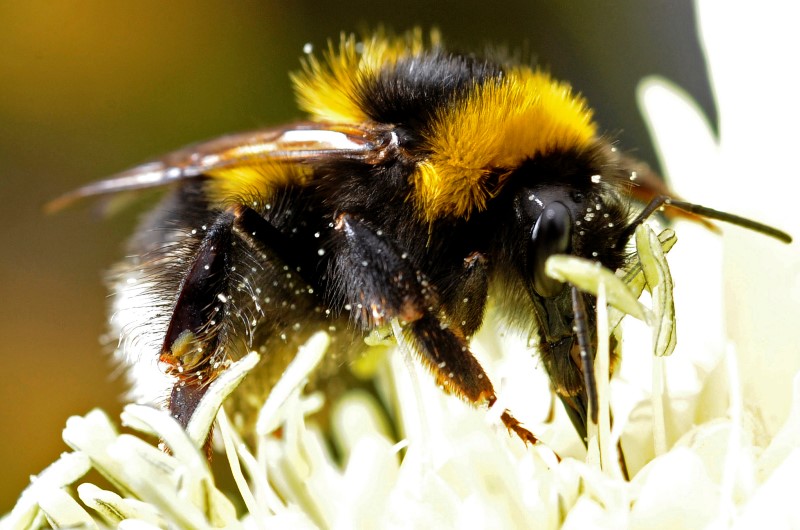By Kate Kelland
LONDON (Reuters) - Wild bees that forage from oilseed rape crops treated with insecticides known as neonicotinoids are more likely to undergo long-term population declines than bees that forage from other sources, according to the findings of an 18-year study.
The new research covered 62 species of bee found in the wild in Britain and found a link between their shrinking populations and the use of neonicotinoid pesticides.
Neonicotinoids are used worldwide in a range of crops and have been shown in lab-based studies to be harmful to certain species of bee - notably commercial honeybees and bumblebees.
The European Union limited use of the chemicals - made and sold by various companies including Bayer (DE:BAYGN) CropScience and Syngenta - two years ago, after research pointed to risks for bees, which are crucial for pollinating crops.
Neonicotinoids were initially licensed for use as a pesticide in Britain in 2002. By 2011, the proportion of UK oilseed rape seeds treated with them was 83 percent, according to the researchers leading this latest study.
Going back to data from 1994 up to 2011, the scientists analyzed how large-scale applications of neonicotinoids to oilseed rape crops influenced bee population changes.
The results, published in the journal Nature Communications, found that bees foraging on treated oilseed rape were three times more likely to experience population declines than bees foraging from other crops or wild plants.
Giving details at a briefing in London, Ben Woodcock, who co-led the study, said the average decline in population across all 62 species was 7.0 percent, but the average decline among 34 species that forage on oilseed rape was higher, at 10 percent.
Five of the 62 species studied declined by 20 percent or more, he said, and the worst affected declined by 30 percent.
Woodcock, an ecological entomologist at the Natural Environmental Research Council Center for Ecology and Hydrology, said the findings showed the extent of the impact.
"Prior to this, people had an idea that something might be happening, but no-one had an idea of the scale," he told reporters. "(Our results show that) it's long-term, it's large scale, and it's many more species than we knew about before."
Woodcock's team said this should add to the body of evidence being considered in a review of neonicotinoid risks to bees being carried out by the European Food Standards Authority, expected to be completed by January 2017.
Christopher Connolly, a neurobiologist and bee expert at the University of Dundee, who was not directly involved in this research, said: "The evidence against neonicotinoids now exists in key bee brain cells involved in learning and memory, in whole bees, entire colonies and now at the level of whole populations of wild bees."
